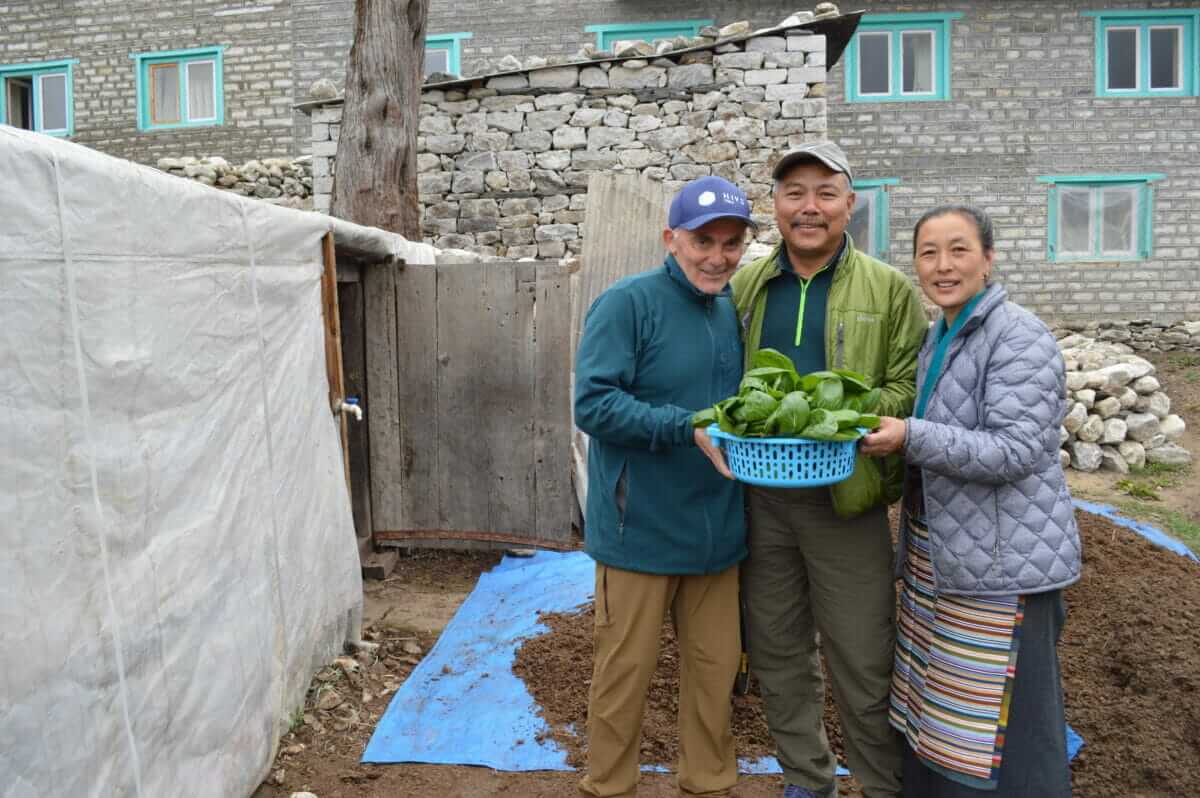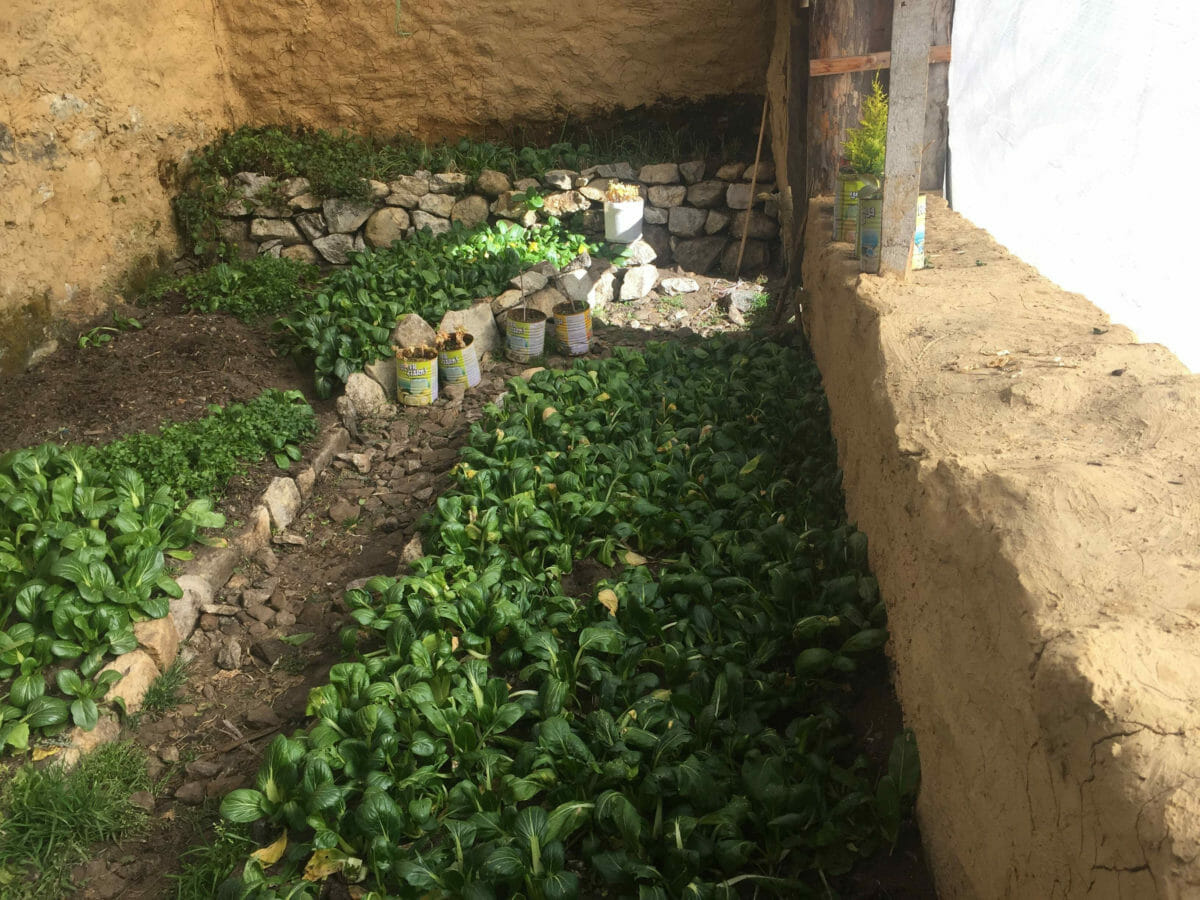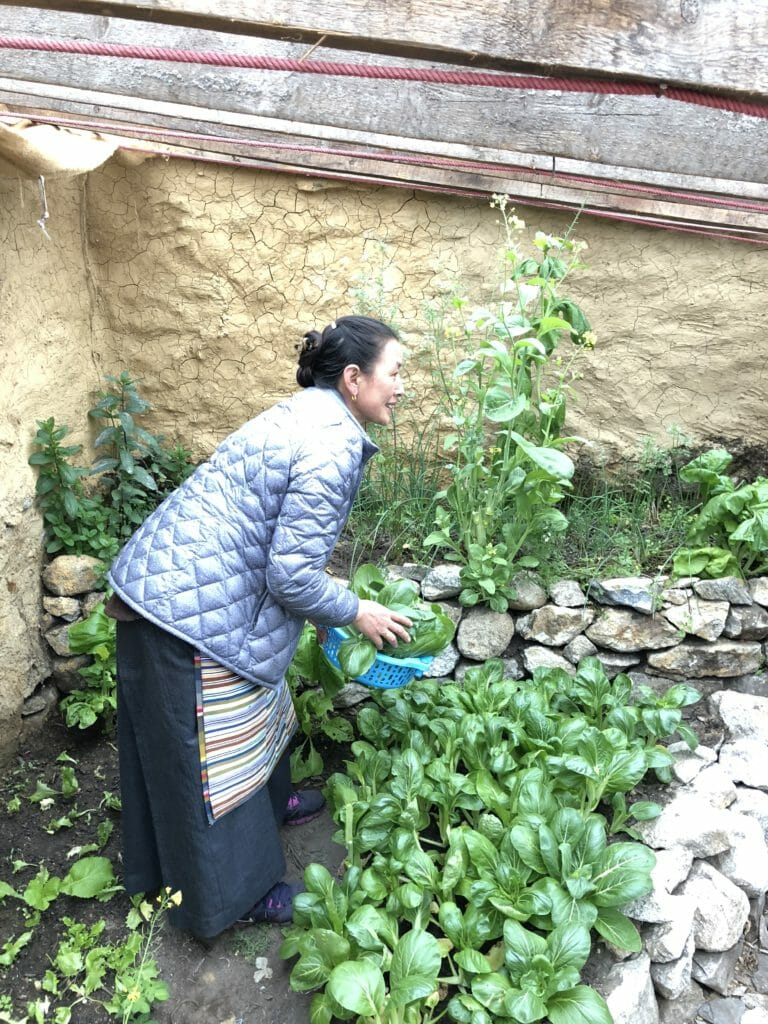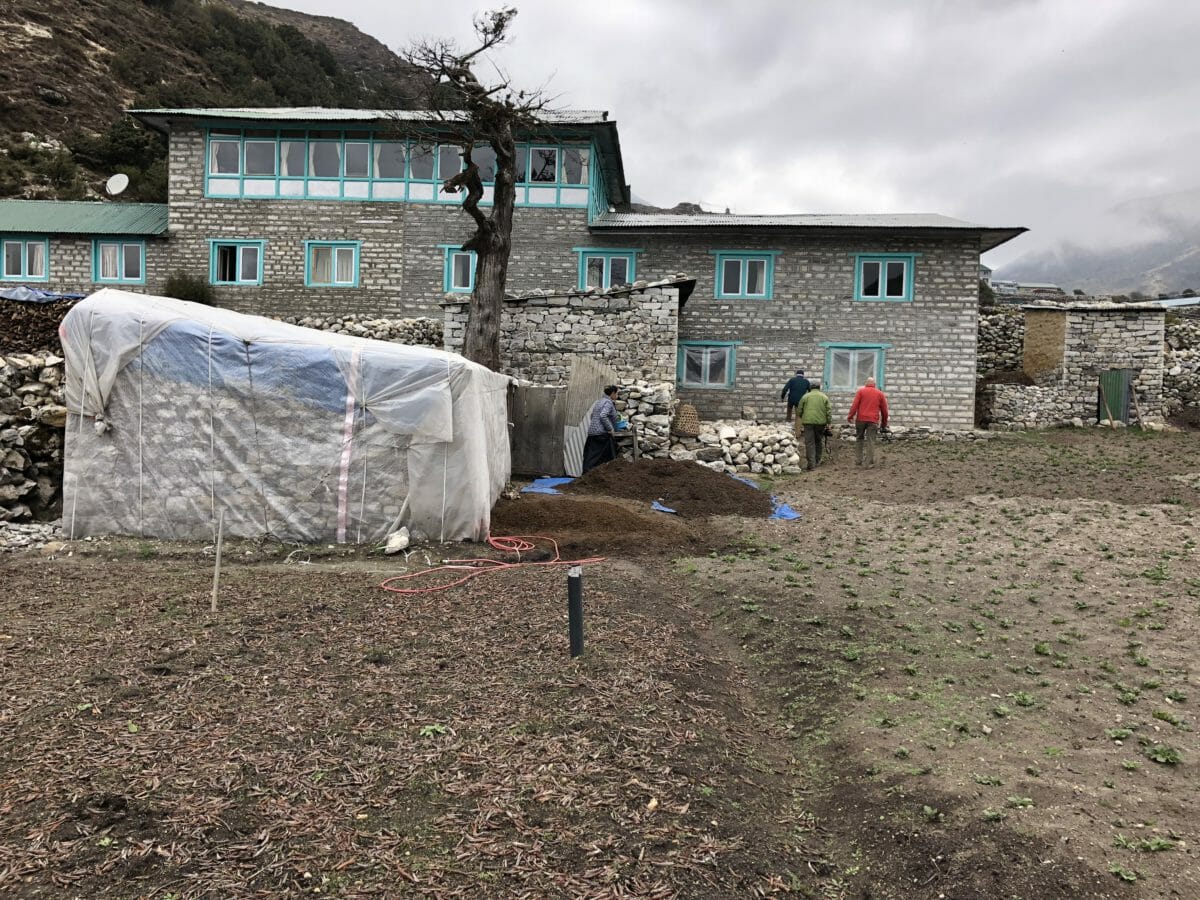This Everest Greenhouse is One of the Highest Gardens in the World
Nothing like a fresh salad at 13,000 feet.
This Everest Greenhouse is One of the Highest Gardens in the World
Nothing like a fresh salad at 13,000 feet.

Frank stands outside the greenhouse with Temba and his wife, Yangzee, as they show off the day's harvest. Frank Giustra
Food has never been the main attraction — or even a side attraction — of my trekking adventures. Instead, it has primarily been an inconvenient necessity, largely consisting of rice, beans and other forms of sustenance. Without fresh vegetables, herbs and garlic, it all starts to taste the same after a day or two.
Of course, mountain adventures aren’t about the food. They are about fulfilling ambitions, testing both your physical and mental limits and maybe learning something new about yourself. Sometimes, too, there’s a lesson in there about horticulture.

Last year, I trekked with a group of friends to Everest Base Camp for our second high-altitude adventure. (Two years earlier, we summited Kilimanjaro at 19,300 feet.) Everest Base Camp wasn’t as challenging as Kilimanjaro — it was 2,000 feet lower than Kilimanjaro and not nearly as steep of a climb.
But there was more to see on the Everest walk. Kilimanjaro was mostly bare rocks, while the Everest views were filled with snowy peaks and tiny villages. We slept in small lodges and visited cultural sites along the way, including a monastery where we were blessed by a Nepalese monk.
And then there was the food, including the unexpected gardens. During our Kilimanjaro trek, our daily sustenance consisted of the aforementioned rice and beans and a lot of ginger tea. But on our Everest trip, we had a much wider variety of food. There were lots of potatoes and French fries, processed meats, soups and, at one point, yak cheese (which I can tell you is nothing like Asiago or Parmesan).
However, the food took a surprising turn when we reached the house of our lead guide, Ang Temba Sherpa. Temba had summited Everest once and would have attempted it again if he hadn’t promised his mother that he would never go back after she found out he had gone up the first time. He and his wife, Yangzee, live at 13,100 feet in the village of Pangboche, on the trail to Mount Everest. Once we had taken off our boots and settled in for a rest, Yangzee made us a delicious dinner, the most memorable parts of which were the vegetable side dishes and a fresh salad.

The Sherpas in the area can normally only grow potatoes. They live amid some of the most spectacular high-mountain scenery in the world, referring to the Khumbu Valley as “beyul,” which means “blessed sanctuary.” But it is a hardscrabble life high in the Himalayas. The Sherpa people must travel throughout the year to survive — in monsoon season, when they can graze their yaks, they move up the valley. To purchase rice, salt, spices and staples, they trek down the valley to the trading village of Namche Bazaar. Everything is carried by porters or on the backs of yaks. There are no wheeled vehicles, bicycles, ox-drawn carts or motor vehicles in the Khumbu — the trails are just too steep.
So, in 2012, without an alternative means to get fresh vegetables, Temba and his wife decided to build their own greenhouse at 13,000 feet. Using stones and mud for the walls and corrugated plastic and plastic sheeting for the roof, they crafted a utilitarian greenhouse. Now, they are able to grow tomatoes, bok choy, broccoli, cucumber, squash and lettuce throughout the year, as well as flavor-boosting herbs like mint, chives and coriander.

In recent years, the growing staple of Khumbu (Sherpa) agriculture at these altitudes has changed: Sherpas began to bring in outside seeds for potatoes, as the new varieties grow faster. But they also lack flavor and longevity and rot much faster when stored in the ground, as Sherpas have traditionally done. Buckwheat, a nutritious grain that is essential for growing children who live at high altitudes, is also widely grown in the area.
Another challenge in recent years has been a lack of snow on the ground during winter. While temperatures are still extremely cold — perhaps even colder than before — without the snow cover, the soil is too dry in the spring, making the start of growing season difficult. Then add monsoon season — the constant rains from mid-June to early September — to the mix. Here, farmers are seeing more rain than ever before — and too much of it.
Difficulties aside, Temba and his wife are rightfully proud of their greenhouse and gave me a tour, describing each vegetable variety as if it were one of their children. We enjoyed a great evening at their lodge, which included a viewing of Everest memorabilia and fascinating photos that they had collected over the years. But the best part had to be that salad at 13,000 feet.
Follow us

This work is licensed under a Creative Commons Attribution-NoDerivatives 4.0 International License.
Want to republish a Modern Farmer story?
We are happy for Modern Farmer stories to be shared, and encourage you to republish our articles for your audience. When doing so, we ask that you follow these guidelines:
Please credit us and our writers
For the author byline, please use “Author Name, Modern Farmer.” At the top of our stories, if on the web, please include this text and link: “This story was originally published by Modern Farmer.”
Please make sure to include a link back to either our home page or the article URL.
At the bottom of the story, please include the following text:
“Modern Farmer is a nonprofit initiative dedicated to raising awareness and catalyzing action at the intersection of food, agriculture, and society. Read more at <link>Modern Farmer</link>.”
Use our widget
We’d like to be able to track our stories, so we ask that if you republish our content, you do so using our widget (located on the left hand side of the article). The HTML code has a built-in tracker that tells us the data and domain where the story was published, as well as view counts.
Check the image requirements
It’s your responsibility to confirm you're licensed to republish images in our articles. Some images, such as those from commercial providers, don't allow their images to be republished without permission or payment. Copyright terms are generally listed in the image caption and attribution. You are welcome to omit our images or substitute with your own. Charts and interactive graphics follow the same rules.
Don’t change too much. Or, ask us first.
Articles must be republished in their entirety. It’s okay to change references to time (“today” to “yesterday”) or location (“Iowa City, IA” to “here”). But please keep everything else the same.
If you feel strongly that a more material edit needs to be made, get in touch with us at [email protected]. We’re happy to discuss it with the original author, but we must have prior approval for changes before publication.
Special cases
Extracts. You may run the first few lines or paragraphs of the article and then say: “Read the full article at Modern Farmer” with a link back to the original article.
Quotes. You may quote authors provided you include a link back to the article URL.
Translations. These require writer approval. To inquire about translation of a Modern Farmer article, contact us at [email protected]
Signed consent / copyright release forms. These are not required, provided you are following these guidelines.
Print. Articles can be republished in print under these same rules, with the exception that you do not need to include the links.
Tag us
When sharing the story on social media, please tag us using the following: - Twitter (@ModFarm) - Facebook (@ModernFarmerMedia) - Instagram (@modfarm)
Use our content respectfully
Modern Farmer is a nonprofit and as such we share our content for free and in good faith in order to reach new audiences. Respectfully,
No selling ads against our stories. It’s okay to put our stories on pages with ads.
Don’t republish our material wholesale, or automatically; you need to select stories to be republished individually.
You have no rights to sell, license, syndicate, or otherwise represent yourself as the authorized owner of our material to any third parties. This means that you cannot actively publish or submit our work for syndication to third party platforms or apps like Apple News or Google News. We understand that publishers cannot fully control when certain third parties automatically summarize or crawl content from publishers’ own sites.
Keep in touch
We want to hear from you if you love Modern Farmer content, have a collaboration idea, or anything else to share. As a nonprofit outlet, we work in service of our community and are always open to comments, feedback, and ideas. Contact us at [email protected].by Frank Giustra, Modern Farmer
January 15, 2019
Modern Farmer Weekly
Solutions Hub
Innovations, ideas and inspiration. Actionable solutions for a resilient food system.
ExploreExplore other topics
Share With Us
We want to hear from Modern Farmer readers who have thoughtful commentary, actionable solutions, or helpful ideas to share.
SubmitNecessary cookies are absolutely essential for the website to function properly. This category only includes cookies that ensures basic functionalities and security features of the website. These cookies do not store any personal information.
Any cookies that may not be particularly necessary for the website to function and are used specifically to collect user personal data via analytics, ads, other embedded contents are termed as non-necessary cookies.
Came across your article in Smithsonian on the Mt. Everest greenhouse. Would like to see more of what you cover.
Interesting
Please bring back your print version!
I miss it …
Greenhouse gardens at 13K feet are more common than you realize. I was recently in Tibet, and Lhasa is at 13,000 feet. Taking the road to Everest Base Camp, we saw many greenhouses, both small-scale and commercial-scale.
Wow! I want salad at 13,000 feet! I wonder how wine at that elevation is haha. The part with the snow is a bit concerning however. We need balance for gardening!